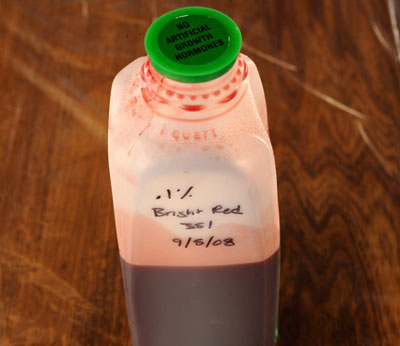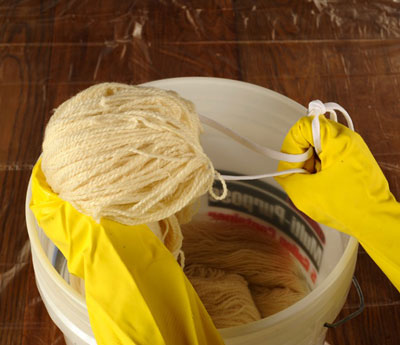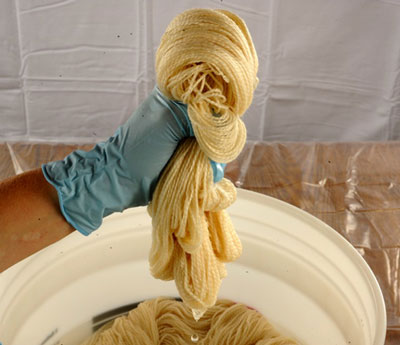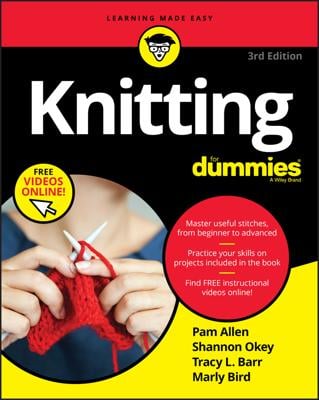Dip-dyeing creates a repeating color sequence with more diffused transitions. This method is especially nice for silk yarn. Sometimes it is easier to dye a tightly twisted silk yarn to the core by submersing rather than painting with dye. It is easier to manipulate skeins of smaller circumference with this technique.
Carefully measure the desired amount of dye powder and place it in the Pyrex measuring cup.
You may either use measuring spoons or a scale to measure dye powder.
Slowly add 2 tablespoons of boiling water (for acid dyes) and mix the dye to form a paste.
Some dye powders are dry and sticky at first. Others form curds when water is added. It’s important to mix the paste until it is completely smooth before adding more water.
Let the dye cool.

In general, it’s best to use dyes at room temperature, since any heat may affect the dyeing process. You can store the dye in a plastic container for up to six months. Be sure to label the dye.
In a 5-gallon plastic bucket with a lid, Add 6 tablespoons citric acid crystals and 2 teaspoons Synthrapol to 1 gallon room-temperature water (approximately 95°F/35°C).
Some dye procedures require that you add acid to the presoak. Soaking fibers in an acid bath makes them receptive to the dyes by altering the fibers’ pH. This type of soak is used most often for direct application techniques. Soak fibers for at least thirty minutes before dyeing.
Place the wet yarn or fiber in the presoak.

Most yarn should soak for a minimum of 30 minutes. It takes more time to wet out silk fiber. Allow the skeins to soak for a minimum of 1 hour, preferably longer.
Remove the fiber from the soak, gently extract the excess water.

The spin cycle on your washing machine will spin out enough moisture after 1 minute to leave sufficient moisture in the fiber for dyeing. Make sure you turn off the water so you don’t add more water as you spin!

